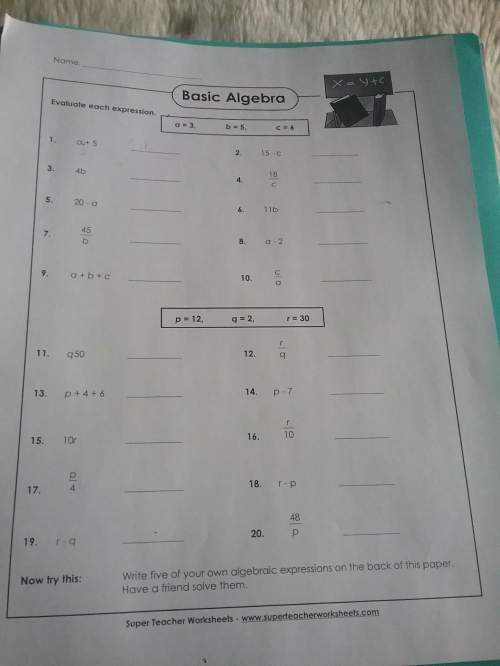
Mathematics, 04.11.2019 14:31 anaiah13
The vertices of a quadrilateral abcd are a(-3, 4), b(-4, 1), c(-7, 2), and d(-7, 6). the vertices of another quadrilateral efcd are e(-10, 1), f(-11, 4), c(-7, 2), and d(-7, 6). which conclusion is true about the quadrilaterals?
their corresponding diagonals are equal.
the measures of their corresponding angles are not identical.
the lengths of their corresponding sides are unequal.
their shapes and sizes are not identical.

Answers: 2


Other questions on the subject: Mathematics

Mathematics, 21.06.2019 17:20, polarbear3787
Which system of linear inequalities is represented by the graph? x-3y > 6 and y? 2x + 4 x + 3y > 6 and y? 2x - 4 x - 3y > 6 and y? 2 - 4 x + 3y > 6 and y > 2x + 4 no be 2 -1.1 1 2 3 4 5 submit save and exit next mark this and retum be
Answers: 1

Mathematics, 21.06.2019 19:30, Riley3833
Koji is installing a rectangular window in an office building. the window is 823 feet wide and 534 feet high. the formula for the area of a rectangle is a=bh. what is the area of the window? enter your answer as a mixed number in simplest form in the box. $$ ft2
Answers: 1

Mathematics, 21.06.2019 21:30, kimryan520
The ratios of boys to girls on a soccer league is 2: 5. if there are 28 boys, how many girls are playing soccer? extra points! will mark as brainiest asap
Answers: 2
You know the right answer?
The vertices of a quadrilateral abcd are a(-3, 4), b(-4, 1), c(-7, 2), and d(-7, 6). the vertices of...
Questions in other subjects:







Mathematics, 09.12.2021 04:00







